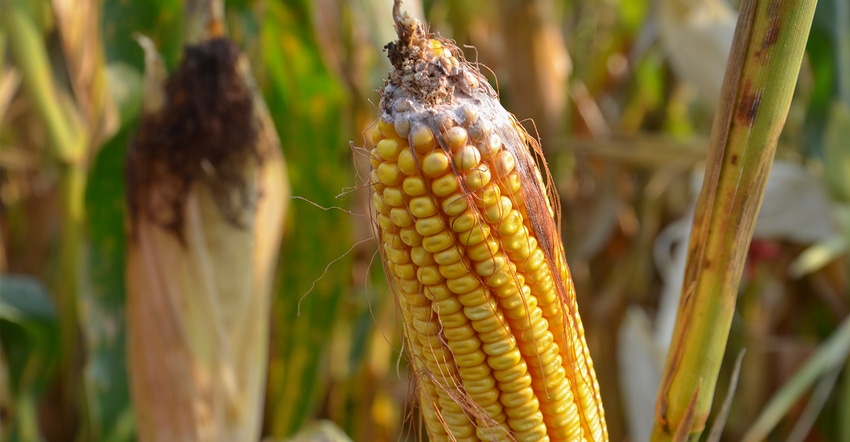
Walk through a cornfield before harvest, and if you look hard enough, you will likely find an ear affected by some sort of mold or ear rot. Fungi survive in the soil, and it’s not uncommon to find an ear here and there that’s infected. The real question is if it’s just a novelty, or if there is enough infection to signify a real problem.
So far this year, it’s too early to tell if ear rot will be a real problem, notes Dave Nanda, an independent crops consultant. He found an ear or two with rot while scouting recently, but most ears were still sound and unaffected.
Here are six possible ear rots and their symptoms. The information was supplied by the Purdue University Corn & Soybean Field Guide.
• Gibberella ear rot. A pink to red mold develops at the tip of the ear and progresses toward the base. Ears may appear reddish in later stages.
• Diplodia ear rot. The organism causing this disease usually forms a white to gray mold. It is more likely to begin at the base of the ear and move upward over time. If the whole ear is infected, it may be light in weight.
• Fusarium ear rot. Look for a white to gray discoloration of individual kernels or groups of kernels. In some cases you may see a starburst pattern of lines that radiate from where silks were attached.
• Aspergillus ear rot. Look for an olive-green mold on a few kernels or a larger section of the ear. This fungus favors hot, dry weather. Affected ears may be small and lightweight.
• Trichoderma ear rot. Greenish-blue mold can grow over kernels and across the ear. The entire ear may be affected.
• Penicillium ear rot. Look for a dense, blue to gray fungus that is concentrated either on a few kernels or near the tip of the ear.
About the Author(s)
You May Also Like




